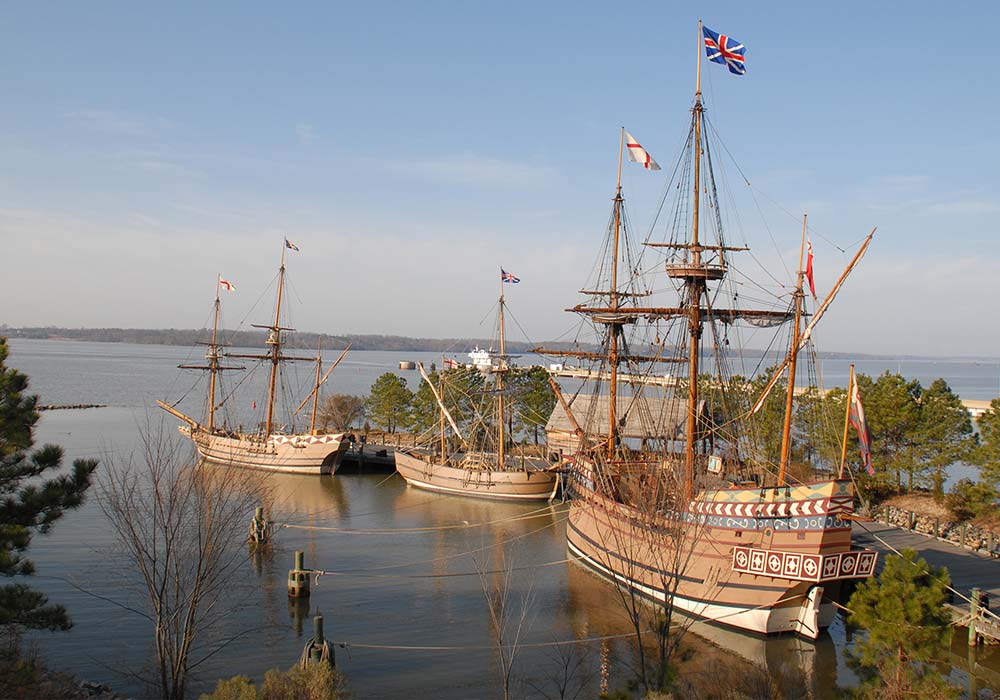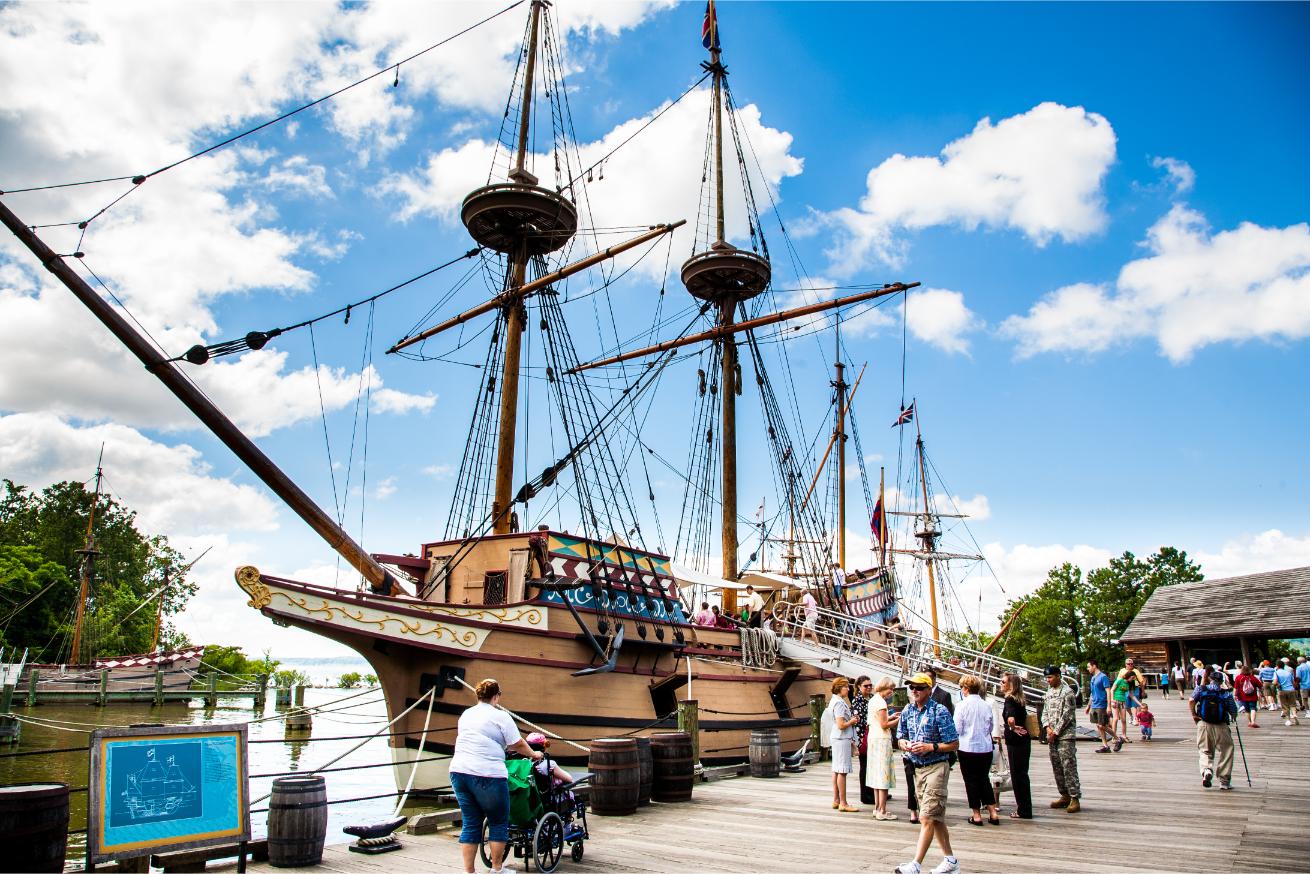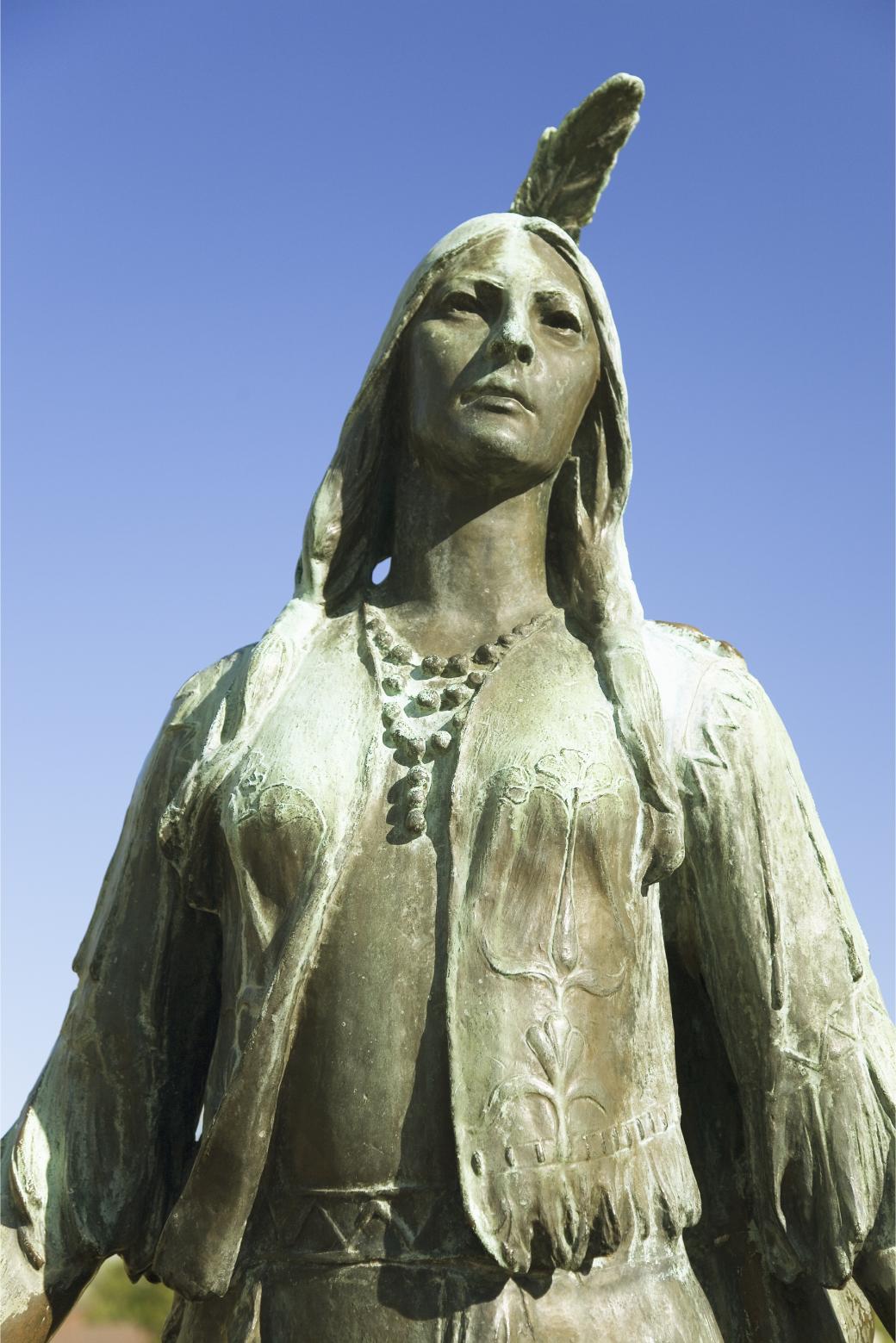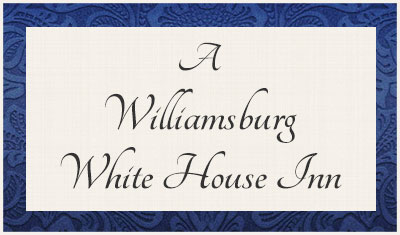
Jamestown Settlement is a museum and outdoor experience that explores life in 17th century Virginia. It is a must-see attraction when visiting Williamsburg, Virginia. But do not just take our word for it. Check out some of these reviews from TripAdvisor:
“The museum is well laid out and easy to traverse from one time period to the next.”
“That was one of the best museums I’ve ever visited.”
“As a history buff, I worried this would be too “Disneyland-ish.” NOT AT ALL!”
The information presented spans an era of change as the first English settlers arrived in America and started a settlement named after their king. Jamestown ended up becoming the first permanent English settlement in North America; the group of 104 men and boys arrived 13 years before the Pilgrims landed at Plymouth Rock. Visitors can watch the transformation of the area from the original Native American lands to the influence of English culture and government. Jamestown Settlement is open daily except for Thanksgiving, Christmas, and New Year’s Day. The Jamestown Settlement is easy to access from the A Williamsburg White House. Simply make a left out of the driveway and it is just 10 minutes down the road.

A visit to Jamestown is an opportunity to learn about how three different cultures helped to form the building blocks of traditions we have in the country today.
The Powhatan Indians lived on the land for centuries. The English settlers first arrived in 1607. Visitors can learn about the initial peace between these two groups and the eventual downturn resulting in the Powhatan War. The arrival of the first West Central Africans in 1619 brought even more cultural influences. Ultimately, the history of Jamestown was short-lived. By the mid-1700s, it no longer existed as an official town. Even still, the legacy of the area has had long reaching effects.
Step into history in life-size re-creations. While you cannot actually relive history, you can explore it at a place like Jamestown.
Paspahegh Town is filled with the traditional culture of one of the Algonquin-speaking tribal groups native to the area. When visitors step inside the town they see reed-covered houses, cooking circles, and a ceremonial circle. The authenticity of the town is confirmed by nearby archeological findings, oral tradition from recognized tribes, and written descriptions and drawings by the English settlers.
James Fort is a sample of how the colonists lived from 1610 until 1614. The fort features thatched roof homes, an Anglican Church, a court of guard, a storehouse, and a governor’s house.
The first English colonists arrived on three ships: the Susan Constant, the Godspeed, and the Discovery. Re-creations of all three ships are docked at Jamestown and visitors are welcome to come aboard and get a taste of what life would have been like for the four-and-a-half-month voyage across the Atlantic Ocean. Records show that the Susan Constant had 71 passengers, the Godspeed had 52 passengers, and the Discovery had 21 passengers (some of the passengers were crew tasked with returning the ships to England). Keep those numbers in mind as you venture through the ships and consider who you would want to spend so much time with in such close quarters. Occasionally one of the three ships will be called upon to participate in a commemorative event elsewhere or to host a maritime outreach educational program for students. However, Jamestown is their home dock and all three are typically available for exploration.
Costumed historical interpreters are there to guide your experience.
In Paspahegh Town, the interpreters share information about how the Indigenous People hunted, fished, and gathered and grew food. You can learn about their pottery techniques and how they processed and used animal hides. Two of the highlights of Paspahegh Town are demonstrations on how to make a dugout canoe and how to make clothing by weaving feathers together.
Interpreters in James Fort use 17th century style tools to make wood and leather products. Step into the blacksmith’s forge to watch the repair of metal objects as well as the forging of new ones. The reenactments continue outside as well. Gardens are full of heirloom vegetables, herbs, tobacco, and corn.
Can you imagine navigating the ocean without GPS? Historical interpreters on the ships can help visitors understand how 17th century sailors found their way. They also demonstrate important sailing skills such as knot tying and sail raising.
There are things to do even on rainy days.
Indoor galleries boast over 500 artifacts currently on display. Visitors can view everything from everyday objects, such as furnishings and toys, to a map of Virginia created in 1612 by Captain John Smith.

- Pocahontas is perhaps the most famous of the Powhatan Indians. A display in her honor includes a German stoneware jug that was reportedly given to Pocahantas by Queen Anne.
- The military offensive exhibit boasts one of 16 remaining jack of plates. The jack of plates is an iron-plated “vest” worn to protect the settlers from lethal arrow attacks. It can be compared to a modern day bullet proof vest.
- The Africa to Virginia exhibit shows more than just the life the Africans were forced to endure in the settlement. It also explores the rich and beautiful culture that was left behind in Africa.
- The activities of women in Jamestown were rarely recorded unless they did something wrong. However, the Jamestown Settlement does have details on the 56 women recruited to be brides for the men in the settlement.
- The Western Europeans had knowledge of medicine and science that they brought with them to this new world. They also had ideas on art and common laws. The roots of our current society can be seen the artifacts on display.
Two films are show repeatedly throughout the day to enhance visitor’s understanding of the history and importance of Jamestown.
- 1607: A Nation Takes Root is shown every 30 minutes in the museum theater. It is a recommended first stop for visitors to the museum as it provides an overview of the entire history of Jamestown.
- Bacon’s Rebellion is shown every 20 minutes. The 4-D multi-sensory experience portrays the 1676 armed rebellion against the Jamestown governor’s rule.
The annual Military Through the Ages event is a grand spectacle.
Hundreds of re-enactors descend upon Jamestown to display military uniforms, weapons, and tactics spanning centuries of history. Visitors can learn about everything from 500 B.C.E. to modern day militaries. Highlights of the weekend event include performances by the U.S. Army Old Guard Fife and Drum Corps, a narrated flyover by a UH-60 Black Hawk helicopter, and artillery-firing demonstrations. 2024 marks the 40th anniversary of this special event; mark your calendar now for March 16-17, 2024. This event is a must-see for any military or history buff.
